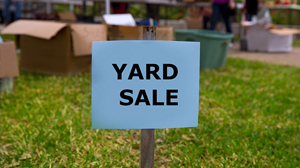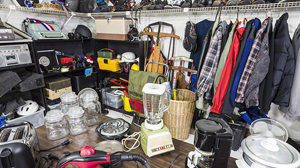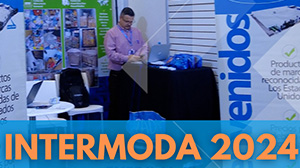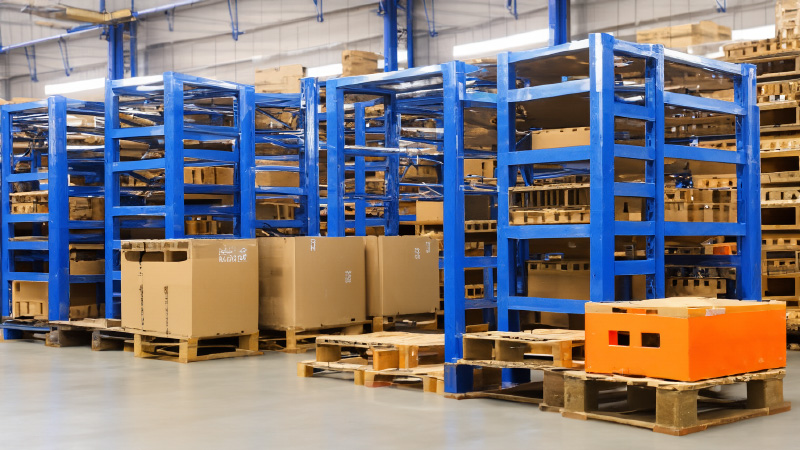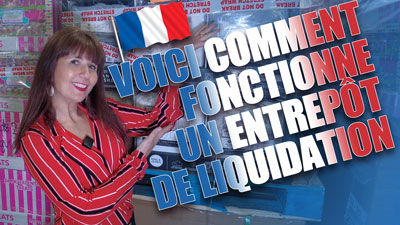
Success in the liquidation industry depends on dedication, hard work and making it through inevitable learning curves. Ana and Jorge Garcia’s story demonstrates the power of dedication, hard work and the learning curve that leads to success in the liquidation industry. Ana and Jorge own a thriving flea market business that they started in 2001. At the time, Jorge was employed in the restaurant industry and the couple expressed frustration at having very little time to spend with their expanding family. Looking for an opportunity to go into business for themselves and be present for their children, they purchased their first pallets of liquidation merchandise and set up their first small flea market stand. Within less than a year of opening their flea market business, Jorge was able to dedicate himself full time to their new venture and the couple found themselves self-employed and gainfully employed in an activity that could involve the whole family.
Their very first purchase was a pallet of trashcans that sold within hours and they quickly moved to purchasing mixed pallets of general merchandise from a national department store. Their second purchase was 2 pallets, which quickly grew to 4, then 6, and now 10 per order. “When we started,” says Ana, “we had one flea market stand that the both of us would run. We now have two stands each in the same flea market and on certain weekends we even add another two, making it six stands total.” These days, they report that they can expect to approximately double their investment on any given pallet, give or take a few dollars.
While their business grew quickly from the moment they started, it wasn’t without challenges. Their biggest challenge initially was getting over the fear of making the wrong purchases. “We had no way to know if what we bought would sell,” says Jorge, “and over time we learned to gauge what constitutes a good pallet from a less good pallet. We learned to visually evaluate the products and figure out our potential profit before we purchased any lot.” According to them, this ability to estimate profits is responsible for a big portion of their success.
Another challenge they frequently encounter is finding unexpected batches of seasonal merchandise in assorted pallets. Every once in a while, they’ll receive a large amount of Halloween items in January or Easter items in July. “It’s part of the business,” explains Ana, “so we rent a small storage space and warehouse those items until the season comes around again and we can charge more for them. Nothing is ever lost.”
Ana and Jorge purchase as-is customer returned merchandise and estimate that approximately 80% of the time, the merchandise is good and sellable while 20% of the time, there’s lots of throwaway. “We never throw it away even if it’s broken,” says Ana. “We learned that customers will buy basically anything if the price is right, so anything that is legitimately broken we put in a big bin in our booth for $1 per unit and they sell out every time.” Jorge adds that they don’t test, repair or otherwise tamper with any of the merchandise. “Regardless of its condition, we put signs up in our stands that state that all sales are final and products are sold as-is and untested. People buy without any issues and they rarely ever come back with a complaint. If you set the right expectations, people will take a risk.”
This dynamic duo has experienced a steep learning curve while growing their business and chose to impart the following advice to others looking to get started selling liquidation products:
- Start with at least two pallets for variety. If you buy just one to fill up an entire flea market stand, chances are your stand will be bare and won’t attract much attention. The contents of two pallets usually make a much better visual impact and stop customers as they walk by.
- Don’t be afraid of broken merchandise. Even if you wouldn’t buy it, our experience proves that others will if the price is right.
- Don’t charge too much. Favor volume over profit margins. It’s more profitable in the long-run to move your inventory quickly, make money for the next load and keep bringing in fresh inventory. If customers see the same stuff over and over that hasn’t sold, it lowers the perceived value of the merchandise.
- Lower your prices as the days go by. If you have multiple flea market days, charge your premium pricing on the first day. For every subsequent day that those same items haven’t sold, discount them until they’re gone. Focus on moving everything as quickly as you can.
- Look for merchandise all the time and don’t get lazy. Variety, fresh inventory and staying informed on what customers are looking for is the best way to stay ahead of the competition.
Ana and Jorge are planning to continue growing their flea market business and perhaps eventually open a retail store. Visit them on Saturdays, Sundays and Tuesdays at the Alpine Village Swap Meet in Torrance, CA or on Wednesdays at the Roadium Open Air Market in Redondo Beach, CA.



